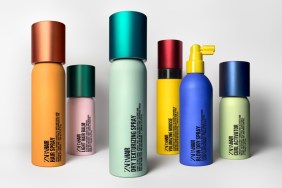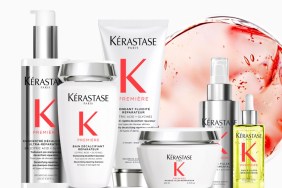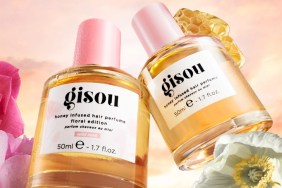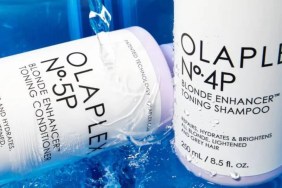Though it may not seem that way, your hair is constantly growing. Generally, hair grows approximately half an inch per month, or about six inches per year. So, why isn’t your hair growing? Length retention is an important factor for many and is often overlooked. “Some women are guilty of over-processing their hair with chemicals (straighteners or color) and daily heat styling without proper protection. This type of abuse and lack of care can lead to breakage and prevent the hair from reaching its full length potential,” says Motions celebrity stylist and RiRi’s mane gal Ursula Stephen. Thus, it may look like your hair isn’t growing, but since it keeps breaking, the breakage counteracts the growth.
Genetics plays a factor, too. Not everyone is able to grow hair down to their waist, but that doesn’t mean yours can’t grow to its healthy, maximum length. It takes time, commitment and effort to grow your hair. Here are 13 tips to help your hair flourish and look its absolute best.
Good Nutrition Is Important
A healthy diet can aid in hair growth. Hair grows best when it’s being treated from the inside out. “Eating natural, whole foods makes a huge difference in the appearance and the health of your hair. Opt for nutritious foods like iron-rich dark green leafy veggies, omega-3-rich salmon, fruits of all colors, a high-protein diet from lean meat, nuts or beans, foods rich in B vitamins and biotin like whole grains or eggs,” says Diane C. Bailey, celebrity stylist, author and SheaMoisture beauty ambassador.
Vitamins Can Help
Vitamins and supplements can also aid in the growth of healthy hair. Many hair supplements help to fortify your hair system by feeding the follicle, which helps to encourage healthy growth. Biotin, a B vitamin, has been shown to promote growth in thinning hair. Many dermatologists and hairstylists also recommend Viviscal to those seeking thicker, longer manes. The biotin supplement contains amino acids and marine extracts and has been shown to help with hair thickness and regrowth.
Use a Suds-Free Cleanser
Most shampoos strip the hair of natural oils. Suds-free cleansers don’t contain sulfates, which are harsh on dry, textured hair.
Look for Hydrating and Energizing Ingredients
Stephen recommends using products that contain ingredients such as avocado and coconut oils because they help to keep the hair conditioned by penetrating the shaft and moisturizing at the core — thus preventing breakage. “Spearmint and peppermint oils are also great. They help energize the scalp, increasing circulation and promoting healthy hair growth.”
Moisturize
Moisturizing the hair is key. Textured hair is often dry and brittle. It requires hydrating ingredients that coat the cuticle to seal in moisture, reduce breakage, promote elasticity and help retain length. Moreover, hair is prone to dryness from daily stressors, including styling, chemical treatments and atmospheric elements. To counterbalance the effects of these stressors, Stephen recommends “using moisturizing products on a daily basis — ensuring that your daily stylers have conditioning agents and using leave-in conditioners, hair lotions and other treatments. Also, a weekly deep moisturizing regimen is a must. Take some time to sit with a deep conditioner specially formulated for your hair type.”
But Don’t Over-Moisturize
Too much of a good thing can be counter-effective. “A lot of haircare products contain proteins. And while these can be great for your hair, if not used properly (read: too much protein) it can lead to breakage. Used in moderation, though, proteins can be very helpful in maintaining hair health,” says Stephen.
But over-conditioning with only moisture-based conditioners has its problems, too. It leads to hygral fatigue. Hygral fatigue is when the hair’s protein binding structure is weakened, causing the hair to stretch beyond normal and eventually leading to breakage. The hair shaft works overtime with too much water penetrating and exiting the hair quickly, causing porosity issues. The hair then begins to feel dry, weak and limp, no matter how much additional conditioning is done to it. Hence, the key is to find the proper ratio of protein and moisture to keep your strands at their optimal best.
Avoid Alcohol
Avoid products that contain too much alcohol and not enough conditioning agents. Alcohol dries out the hair and, in turn, leads to breakage.
Stop Abusing Your Hair
Heat styling and chemical processes may seem like a great option for a smooth, silky finish, but extreme heat and over-processing will break the protein bonds of the hair, and once the bonds are broken, they can never be repaired. Thus, limit your use of chemical processes and heat appliances. “The flat iron can be your best friend or your worst enemy. Use a heat protectant before all heat styling and use reduced heat, 350 degrees or lower, to prevent heat damage. Turn it down for healthier hair,” says Bailey.
Use the Right Tools and Accessories
It’s vital to have the correct tools for your hair type. The correct tools will reduce breakage, increase manageability and aid in ease of styling. Bailey recommends using a large-tooth tail comb for dividing, parting and directing textured hair. A wide-tooth comb works well in detangling and distributing smoothing products to the hair and scalp. And a wooden natural boar hairbrush is ideal for distributing nurturing oils to the temples and scalp. Also, utilize hair accessories that are gentle and don’t pull on your textured hair. Tight headbands and rubber bands should be avoided since they often lead to breakage of curly/coily hair.
Minimize Friction
Sleep on a satin pillowcase or with a satin bonnet or scarf. This will cause less friction, tangling and breakage of your hair while you sleep. Plus, as an added bonus, it also helps preserve your blowout or hairstyle.
Detangle Your Hair Properly
Be gentle. Textured hair requires a gentle touch; with every twist and turn, this hair has a fragile point where the strand can break. Use wide-toothed combs that don’t yank on your hair or pull out strands of hair when combing. Try finger combing; it is a great method for women with natural hair.
Stephen reminds us that it’s also important to detangle hair in sections prior to washing it using a wide-tooth comb. “When your hair is wet, it’s at its most fragile state. So when you detangle while wet, you’re more at risk for breakage.” She likes massaging Motions Pre-Wash Detangling Butter ($6.69) onto dry hair and using a wide-tooth comb to loosen the tangles. “If your hair is super tangled, start from the bottom of the sections and work toward the top. This should make washing your hair much easier — and you get the added bonus of extra conditioning.”
Protective Styles Can Help
Using protective styles are helpful when trying to achieve great lengths. It’s a perfect way to give your hair a break from daily styling, which can lead to breakage. Twists, buns, braids and wigs are some options to try. Protective styles should be worn in moderation, however, as they too can sometimes cause breakage from the tension that they put on the hair.
Trim Hair When Necessary
Don’t avoid the dreaded trim. Trims are necessary because when a split end starts, it then gradually travels up the hair shaft. Stephen recommends getting your ends snipped when needed. “If you don’t trim regularly, that split end can travel all the way to the root and cause breakage and possibly bald spots — negating all of your hard work.”








